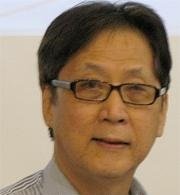长久以来,马来西亚面对著的社会经济和种族问题,就是与土著和非土著用词的制定和分化息息相关,尤其这制度介入到国家的政治和生活层面。
许多观察家将这划分视为阻碍国民团结互助的最大障碍。但是,在国家政策制定和执行中,并没对此做出重大的检讨。
这种规范和定义大多数马来西亚人生活方方面面的政治和政策建构,是否还应该继续下去?这个半个多世纪前制定的政策,是否还适宜?是否有更好的替代架构,可以更有效地应对我们国家建设中面临的挑战?
这些问题很早就应提出了。但是到目前为止,这些质疑一直受到压制或抑制。今天,这样的质疑在社交媒体的开放空间中更有力地显现出来。
土著主义的起源
对于“土著/非土著”的分化,以及如何在国家层面中占据主导地位的研究和讨论,可说是处于空白。至今没有官方的声明或说明来解释该用词的成因,以及为何和为什么需要在国家政策制定中做为主要考量。
本文探讨土著/非土著课题的源起、对象、方式和原因,旨在开展论述,以让我们的领导人能重启这国家,摆脱困扰著我们的种族和身份之死胡同。
值得注意的是,“土著”一词是相对新的词。参考我国独立和1963年马来西亚成立时的宪法和主要官方文件,是没有“土著”这个词的。
不管是从李特制宪委员会(Reid Commission)或科博尔委员会(Cobbold Commission)的议事程序和大量文献,均未发现使用土著/非土著一词,也未提及在确立个人和社群的地位和权利时,需要区分土著或非土著。
反之,宪法第153条所提到的是,马来半岛的马来人,以及沙巴和砂拉越的土著特殊地位,以及其他族群的合法权益。
此外,宪法第160条文将马来人定义为:信奉伊斯兰教,讲马来语,依循马来习俗,并且父母中至少一人,诞生于马来亚1957年8月31日独立前的个人或其后代。
官方首次使用“土著”字眼,可追溯到1965年6月举行的第一届土著经济大会。紧接著,“土著”这字眼在1965年8月首次出现在国会,当时政府依据土著经济大会上的建议,提呈玛拉机构(MARA)法案,取代1953年的乡村和工业发展局法令(RIDA)。
再一次提起有关字眼时,也是在同一年国会会议中。以下摘录自议会的记录:
林苍祐(丹绒国会议员)要求首相说明“土著”(BUMIPUTERA)一词是否拥有法律和宪法定义,以及1963年8月31日以后出生的马来西亚公民子女,是否也应享有土著的权利。
首相东姑阿都拉曼回答:议长先生,阁下,“土著”一词并没有法律定义,其只是用于表示马来亚半岛和婆罗洲的土著;换句话说,马来亚的土著,例如马来人、原住民,以及沙巴和砂拉越的人民,如伊班人、姆禄人、马兰诺人和所有其他土著,都属于此类别。
由于它没有法律定义,因此任何人都可称自己为“土著”。我也可以说,即使是一个具有葡萄牙血统的欧亚人,也可以称其为这国家的“土著”。就此而言,拥有英国血统的欧亚人;只要他们不以英国为祖国,或在这里出生了好几代的华人和印度人,也有权自称为“土著”,只要他们不自称本身是华人。当然,根据《宪法》第153条,国家元首是有责任维护马来人和婆罗洲,即沙巴和砂拉越土著的地位。(参见1965年11月13日的国会议事录)
同样重要的是,在这段时期,伊党国会议员于1965年8月11日提呈的一项动议,“修订宪法,以保障土著在政治、经济、教育和文化领域的权利”,经过了长时间的辩论后,遭到了政府的否决。全面了解当年有关土著字眼的争论,对我们这一代议员和政治领导人都是有利无害的。
我会在下篇文章探讨土著字眼和土著/非土著二分法,如何从政治的构想变为政策的结构,并讨论其中的一些后果。
《质疑土著的建构》(Questioning the Bumiputera Construct (Part 1))原文:
One of the most enduring socio-economic and racial issues in Malaysia is that related to the bumiputera and non-bumiputera term and the division that has resulted since the term was introduced into the nation’s political lexicon and life.
Many observers see it as the biggest obstacle to national solidarity and unity. But nothing much has been done to review its role and significance in national policy making and implementation.
Should this political and policy construct that defines and regulates the lives of the majority of Malaysians in many ways continue? What is its relevance more than half a century after its formulation? What are alternative and better constructs that can address more effectively the challenges that we face in nation building?
These questions should have been asked a long time ago. But they have until now been repressed or suppressed. Today they are emerging more forcefully in the open space of social media.
Discussions on the bumiputera/non-Bumiputera divide and dichotomy have been handicapped by a lacuna in research and studies on how the term “bumiputera” has emerged to assume its centre stage in the nation’s life. No official declaration or account exists to explain the genesis of the term, and why and how it needs to be maintained as the key driving force in national policy making.
This article into the when, who, how and why of the bumiputera/non-Bumiputera issue is intended to open up a discourse that can help our leaders in the rebooting exercise to move the nation out of the race and identity cul-de-sac that we are trapped in.
Origins of Bumiputraism
It is necessary to note that the term “bumiputera” is of relatively recent coinage. Examination of the key constitutional and official documentation leading to the nation’s independence and the establishment of Malaysia in 1963 has found no mention of the term. Neither the Reid Commission nor the Cobbold Commission proceedings and voluminous documentation use the term or refer to the need to differentiate between bumiputera and non-bumiputera in establishing the status and rights of the individuals and communities. What was found instead are the references to the special position of the Malays in Peninsular Malaya and natives of any of the States of Sabah and Sarawak and the legitimate interests of other communities in accordance with the provisions of Article 153.
Further, Article 160 defines a Malay as being one who "professes the religion of Islam, habitually speaks the Malay language, conforms to Malay customs and is the child of at least one parent who was born within the Federation of Malaysia before independence of Malaya on 31 August 1957, or the issue (off-spring) of such a person."
The first official use of the term can be traced back to the first Bumiputera Economic Congress held in June 1965. Following it the term first appeared in Parliament when the “Majlis Amanah Ra'ayat” [MARA] Bill was tabled in August 1965 to replace the Rural and Industrial Development Authority [RIDA;1953] as proposed by the said Congress.
The next occasion when the term was raised was in Parliament in the same year. This following account is excerpted from the proceedings:
Dr Lim Chong Eu (Tanjong) asks the Prime Minister to state whether there is a legal and constitutional definition of the term "BUMIPUTERA", and whether children of Malaysian citizens who were born after August 31st, 1963, will also be entitled to all the rights of BUMIPUTERA.
The Prime Minister: [Tunku Abdul Rahman]
Mr Speaker, Sir, the term "Bumiputera" for that matter has no legal meaning except in so far as to denote the natives of the mainland of Malaya and the natives of the Borneo States; or, in other words, the indigenous people of Malaya such as the Malays, the aborigines and the people of Sabah and Sarawak such as the Iban, the Muruts, the Melanaus and all these other people, who are indigenous to these territories. Since it has no legal meaning, anyone is entitled to call himself "bumiputera" for that matter. I would say that even an Eurasian of Portuguese descent could very well call himself "bumiputera" of this country; or, for that matter again, the Eurasians, who are of British descent; so long as they do not refer to Britain as their home, and again for that matter, those Chinese and Indians who have ·been 'Born here for several generations, are ·entitled to call themselves "bumiputera" so long as they do not describe themselves as Chinese, or call themselves as Chinese, and so it follows, except of course, under Section 153 of the Constitution, it provides that the Yang di-Pertuan Agong shall safeguard the position of the Malays and the natives of the Borneo States, that means Sabah and Sarawak. [ Refer Hansard 13 November 1965; Columns 2567 -2476 for full debate]
Equally importantly during that period, a motion by a PAS MP on 11 August 1965 ‘to amend the Constitution to guarantee the rights of the Bumiputera in the fields of politics, economy, education and culture’ was debated at length but rejected by the Government. A full reproduction of this and earlier debates would be useful to share with our present generation of parliamentarians and other political leaders.
●The second part will examine how the Bumiputera term and Bumiputera/Non-Bumiputera dichotomy changed from being a political construct to become a policy construct and discuss some of its consequences.
【请继续支持我们,推荐下载东方日报APP】
Google Play:https://odn.my/android
HUAWEI AppGallery:https://odn.my/appgallery


